Announced in September 2020, the Xiaomi Mi 10T Pro 5G is the Chinese manufacturer’s top offering in their latest T range of smartphones. With a couple of notable exceptions, the handset boasts borderline flagship specifications at an attractive price point.
The device features the high-end Snapdragon 865 chipset for plenty of processing grunt, runs Android 10 OS via Xiaomi’s custom MIUI 12 interface, and is available with either 128 GB or 256 GB of internal memory, both with 8GB RAM. There’s also a large 6.67-inch UW-FHD LCD display with a 144 Hz refresh rate, HDR10+ rendering, and 500 cd/m2 brightness.
There are three cameras on the back — a main wide, an ultra-wide, and a dedicated macro lens. The main wide module features a 108 MP Quad-Bayer sensor with 2×2 pixel binning down to a final 25 MP output, and is linked to a 26 mm-equivalent f/1.7-aperture lens with phase detection DAF and optical image stabilization. There’s also an ultra-wide camera that offers a 123° field of view via its 13 mm-equivalent f/2.4-aperture lens and records images on a 13 MP standard array sensor with 1.12µm pixels. Completing the triplet of cameras, the Mi 10T Pro 5G also offers a dedicated macro camera with a 5 MP sensor and f/2.4-aperture autofocus lens.
The Mi 10T Pro 5G shoots 8K video at 30 frames per second (fps), 4K at either 30/60 fps and 1080p at up to 120 fps, and features gyroscope-enabled electronic stabilization (gyro-EIS) to control motion effects.
Read on to find out how the Xiaomi Mi 10T Pro 5G camera compares against the competition.
Key camera specifications:
- Triple-camera setup
- Primary: 108 MP sensor with 0.8µm pixels and 26 mm-equivalent f/1.7 lens, OIS, PDAF
- Ultra-wide: 13 MP sensor with 1.12µm pixels and 13 mm-equivalent (123° FOV) f/2.4 lens
- Macro: 5 MP sensor and f/2.4 autofocus lens (not tested)
- LED flash
- 8K video at 30 fps, 4K at 30/60 fps, 1080p at up to 120 fps, gyro-EIS (tested at 4K 30fps)
About DXOMARK Camera tests: For scoring and analysis in our smartphone camera reviews, DXOMARK engineers capture and evaluate over 3000 test images and more than 2.5 hours of video both in controlled lab environments and in natural indoor and outdoor scenes, using the camera’s default settings. This article is designed to highlight the most important results of our testing. For more information about the DXOMARK Camera test protocol, click here. More details on how we score smartphone cameras are available here.
Test summary

Xiaomi Mi 10T Pro 5G


Pros
- Accurate exposure and dynamic range in outdoor and indoor photos
- Pleasant color in outdoor and indoor photos
- Mainly accurate and reliable preview image
- Accurate white balance and skin tones in zoom shots
- High detail in most videos
- Accurate exposure in outdoor and indoor videos
- Accurate white balance in outdoor and indoor videos
- Effective stabilization in most videos
Cons
- Limited dynamic range in low-light photos
- Strong ghosting in some HDR photos
- Short focal length and depth estimation errors in bokeh photos
- Low detail in ultra-wide photos
- Limited dynamic range in most videos
- Autofocus instabilities in indoor and low-light videos
- Visible artifacts in low-light videos
- Sharpness inconsistencies in low-light videos
The Xiaomi Mi 10T Pro 5G achieves an overall DXOMARK Camera score of 118. It’s a very competent device in outdoor and indoor conditions, but ranks behind Xiaomi’s Mi 10 Pro and Mi 10 Ultra models at 128 and 133, respectively.
The main differences we see on the Mi 10T Pro 5G compared to its Xiaomi stablemates are in Photo (121) and especially in the Zoom (61) sub-scores. Forgoing a dedicated tele-lens in place of a macro camera limits the Mi 10T Pro 5G’s scoring potential in our Zoom analysis, although the addition of an ultra-wide module does help. Boasting the same main camera hardware specification as the Mi 10 Pro, it would be fair to assume similar image quality in standard photos, but surprisingly, that isn’t the case. We see a significant regression for texture and noise performance on the Mi 10T Pro 5G compared to the Mi 10 Pro, which had an impact on the former’s Photo sub-score and overall result.
For the most part, however, the Xiaomi Mi 10T Pro 5G’s main camera is a reliable performer on outdoor and indoor scenes. Exposures are accurate, dynamic range is reasonably wide, and color rendering is pleasant. The device also performed well in our analysis of preview image quality, where it provides an accurate representation of exposure, detail, and noise, to give users confidence on how the final image will be rendered. Areas for improvement include low-light performance, as dynamic range is very limited; obvious ghosting artifacts in some HDR shots; and low detail in both low-light and ultra-wide shots.
The Xiaomi Mi 10T Pro 5G achieves a very good Video score of 110, tying with the Mi 10 Ultra and the Mi 10 Pro for moving image capabilities. Video strengths include accurate target exposures and white balance in outdoor and indoor movies, and its gyro-EIS stabilization is fairly effective. Dynamic range is limited compared to the best video performers, slight autofocus instabilities are evident, and visible artifacts in low-light videos hamper its performance overall, but those quibbles aside, the Mi 10T Pro 5G is a good smartphone for mobile video enthusiasts.
Let’s take a more detailed look at the strengths and weaknesses of the Xiaomi Mi 10T Pro 5G, with some sample image comparisons for illustration.
The main camera provides accurate target exposure and reasonably wide dynamic range in indoor and outdoor conditions. In this example, the Mi 10T Pro 5G provides excellent brightness on the portrait, but with slightly more highlight clipping evident in the sky compared to both the Mi 10 Pro and the Pixel 5 reference devices.
Colors are generally natural and pleasant in indoor and outdoor photos, too. In this indoor example, accurate white balance ensures faithful skin tones on the people, and although the Pixel 5 delivers higher saturation for more punchy yellows and blues, the Mi 10T Pro 5G offers nice color rendering overall.
A noticeable difference in the texture-versus-noise compromise between the Mi 10T Pro 5G and the Mi 10 Pro was a little surprising to our testers. While they both seem to have the same main camera module, detail is a bit low on the Mi 10T Pro 5G in our comparisons. The level of detail remains acceptable in indoor and outdoor shots overall, but you can see in this bright light example that the Mi 10 Pro and the Pixel 5 render those intricate fine details noticeably better.
In low-light conditions, the Mi 10T Pro 5G tends to lose even more details; overall, the texture/noise compromise is handled better on the Mi 10 Pro, which has better detail preservation. The Mi 10T Pro 5G does do a pretty good job of noise reduction in indoor photos, but we observed localized noise in flat areas of color and shadow regions in outdoor images.
The Mi 10T Pro 5G’s PDAF autofocus system is fairly reliable, if not outstanding, and puts in an average performance in our AF rankings. Under benchmark testing in the lab, we found autofocus to be fairly fast and accurate under indoor and outdoor lighting conditions, and even when mixing in extremes of brightness to simulate HDR scenes. Slower response times were evident in our low-light autofocus analysis, but most shots remained in sharp focus. We found accuracy to be good when shooting natural test scenes, too, but limited depth of field means the Mi 10T Pro 5G isn’t ideal for multi-plane pictures, as it can’t provide good sharpness on portraits at different distances from the camera.
Shooting in portrait mode, the Mi 10T Pro 5G put in a slightly underwhelming performance for bokeh simulation. We found the main camera’s equivalent focal length a little short for successful portraits, and although the overall effect is acceptable, it’s not quite as competent as that of many competitors. Slight depth estimation artifacts can be seen around complex areas such as the subject’s hair in the example below, and although the blur effect is pleasant, simulated bokeh spotlights are a tad dull and would benefit from greater contrast. We also observed some white balance and target exposure instabilities when using the Mi 10T Pro 5G’s portrait mode over consecutive shots.
Under low-light conditions generally and in our night photography evaluation, we found the Mi 10T Pro 5G to have very limited dynamic range, leading to highlight and shadow clipping in dark scenes. You can see in the nightscape below, shot with the flash turned off, the lit sign in the Mi 10T Pro 5G example shows significant highlight clipping compared to the output from the Mi 10 Pro and the Pixel 5. Target exposure is also a bit low shooting night portraits in flash-auto mode, and artifacts including hue shift near saturation, flare, and color quantization are visible in both flash-auto and flash-off modes on the Mi 10T Pro 5G.
The quality of the Mi 10T Pro 5G’s preview image is a nice strength, with the display providing a reliable representation for exposure, detail, and noise. It’s not quite as successful in portrait mode, where differences in the depth-of-field effect and unnatural looking spotlights effects were observed, but it’s better on standard shots. As for zoom smoothness, some focusing instabilities are also evident when pinch-zooming between the device’s main and ultra-wide modules.
We deducted points from the Mi 10T Pro 5G’s score for ghosting, flare, and face rendering artifacts, which are often evident in high dynamic scenes. We observed some quite serious ghosting artifacts in very challenging backlit scenes, and at close inspection the low detail and unnatural rendering of skin tones on the subject is a little disappointing.
The Zoom score is a combination of a device’s ultra-wide and tele-lens scores, and the Mi 10T Pro 5G doesn’t really excel for either.
While its dedicated ultra-wide module ensures fairly respectable target exposure and color, inconsistent HDR activation results in limited dynamic range, with both highlight and shadow clipping in many examples. The level of detail is also fairly low in wide shots, especially towards the outer field, and noise is usually visible in all of the Mi 10T Pro 5G’s ultra-wide shots.
We also observed many common wide-angle artifacts such as color fringing and geometric distortion, as well as color quantization in indoor ultra-wide shots. In the best examples, the 13 mm-equivalent lens delivers a great field of view, and both target exposure and color are also good. However, the low level of detail and loss of sharpness in the corners, color fringing along contrast edges, and hue shift in the sky mean that the Mi 10T Pro 5G doesn’t really challenge the best ultra-wide options we’ve tested.
In our tele-lens analysis, the Mi 10T Pro 5G’s zoom shots deliver mostly accurate white balance and particularly good skin tone rendering in both indoor and outdoor shots. As you can see in the example below, although color is a little desaturated, the overall effect is pleasant with more faithful skin tones on the portrait compared to the other devices. Target exposures in zoom shots are also mainly accurate outdoors, but again, limited dynamic range often leads to highlight clipping in challenging lighting, and sometimes exposure is a bit low in both indoor and low-light zoom shots.
When relying on a digital zoom crop from the main camera to achieve shots with a greater equivalent focal length, there’s also a visible loss of detail in all of the Mi 10T Pro 5G’s zoom shots. It’s best to stick to close-range magnifications as a result, as there is a noticeable deterioration in detail, as well as an increase in noise and artifacts in all lighting conditions when you push the zoom a little further.
The Xiaomi Mi 10T Pro 5G delivers a very good video performance, achieving similar results to the Mi 10 Pro and the Mi 10 Ultra models, and only fractionally behind the very best devices in our database.
Exposure isn’t a key strength for the Mi 10T Pro 5G’s videos, however, with slightly limited dynamic range often leading to highlight clipping in bright outdoor scenes and slight underexposure of dark areas both indoors and in low light. Target exposures weren’t quite as bright as those from the Mi 10 Pro in our lab video exposure measurements either, although brightness was consistent in a variety of simulated conditions, with acceptable results above 40L* recorded in all conditions between 5 and 1000 lux.
Color rending in the Mi 10T Pro 5G’s videos also remains pleasant most of the time, with accurate white balance in outdoor and indoor conditions, although expect to see a yellow/orange color cast in some low-light videos shot under artificial light sources.
The level of detail is also high in most videos, with broadly similar results to the Mi 10 Pro. The Mi 10T Pro 5G recorded exceptional texture rendering with over 90% acutance in 4K video files in both indoor (100 lux) and outdoor (1000 lux). Details are sometimes lost in low-light videos, but with around 80% acutance recorded at 5 lux, it’s really only in extreme low-light conditions when lack of detail starts to become a problem.
Noise is similarly well controlled in most tested conditions, and we see a much closer texture-versus-noise compromise when comparing the Mi 10T Pro 5G and Mi 10 Pro video files than we did with stills. Again, it’s good down to low-light conditions of 5 lux.
Video autofocus is something of an area for improvement, however. Unnecessary refocusing isn’t uncommon and focus is not always on the main subject, especially when trying to track a subject either indoors or in low light. The Mi 10T Pro 5G’s stabilization system is fairly efficient in controlling motion effects. Stabilization performance is best under indoor and outdoor lighting conditions, but in low light we saw a noticeable difference in sharpness between frames. Finally, some artifacts such as color fringing, color quantization, and ghosting can be seen, especially in low-light videos, but still and all the Mi 10T Pro 5G delivers fairly solid video performance overall.
Conclusion
The Mi 10T Pro 5G heralds something of a return to Xiaomi’s roots of delivering mid-range smartphones with a number of impressive features. Its high-end processor, 144 Hz display, and 108 MP Quad-Bayer sensor will be big draws for consumers after a high-performance device at a more affordable price point than a full-fledged flagship. Of course, savings have to be made somewhere and so Xiaomi ditched the tele-lens module found on the Mi 10 Pro and the Mi 10 Ultra. As a result, this latest T variant isn’t on the same level for zoom shots, instead relying on digital zoom, but you still get a respectable ultra-wide camera for cramming more scene into the frame.
The main camera is also very competent outdoors and indoors, which will satisfy the main demands of most users, and the Mi 10T Pro 5G delivers nice videos, too. In summary, this model isn’t quite on par with Xiaomi’s best camera phones, which deliver better low-light and zoom performance, but it certainly holds its own in the mid-range segment.












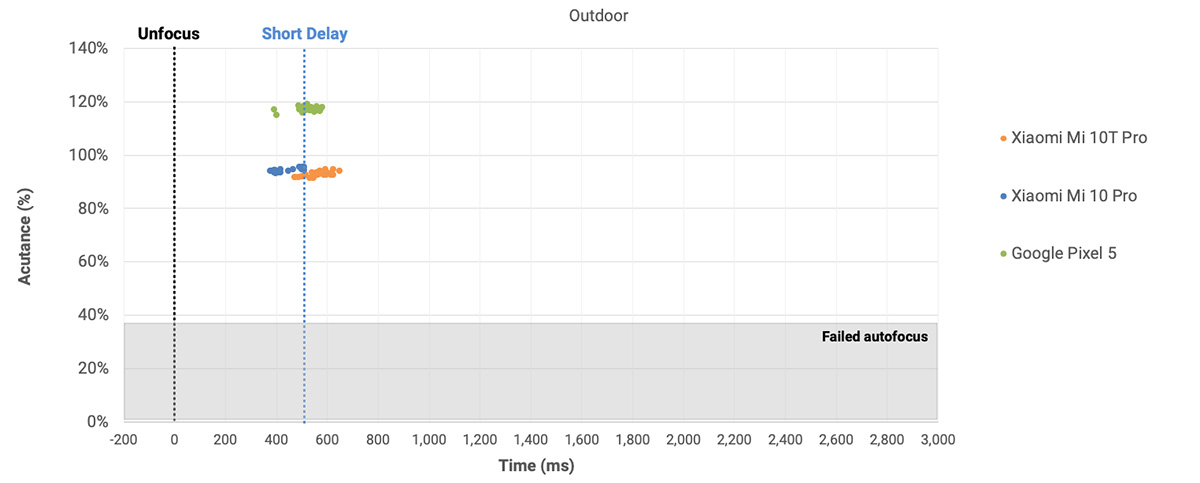


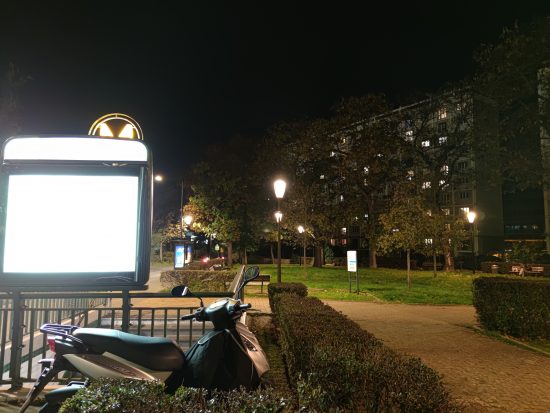








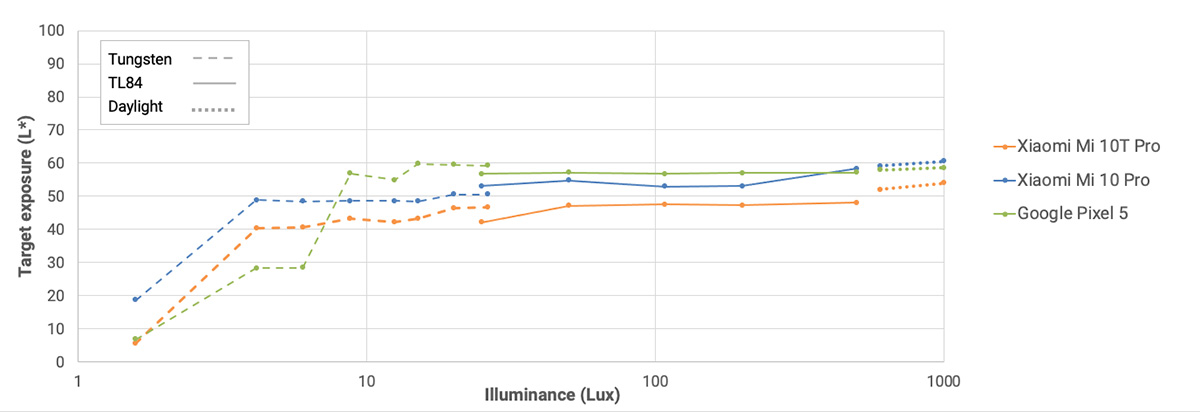
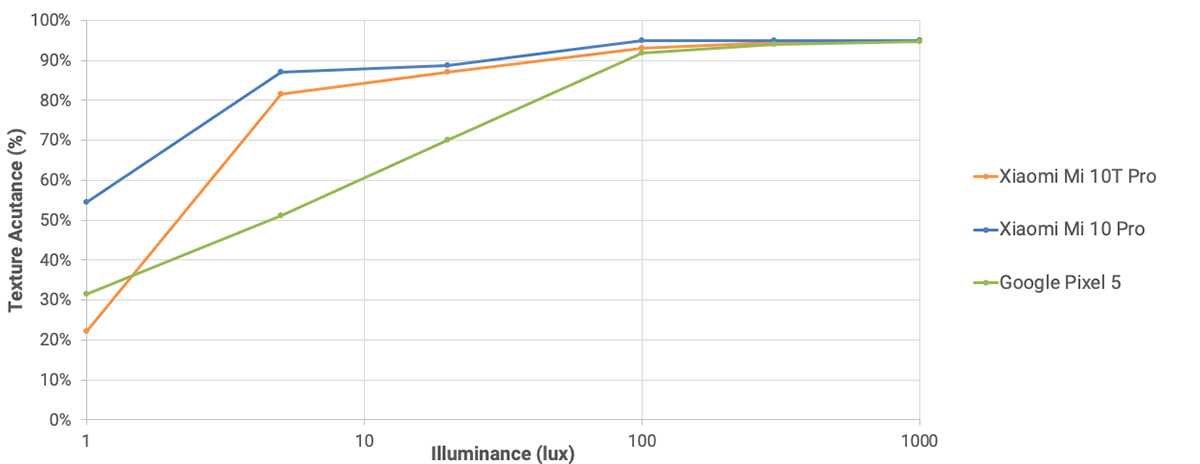
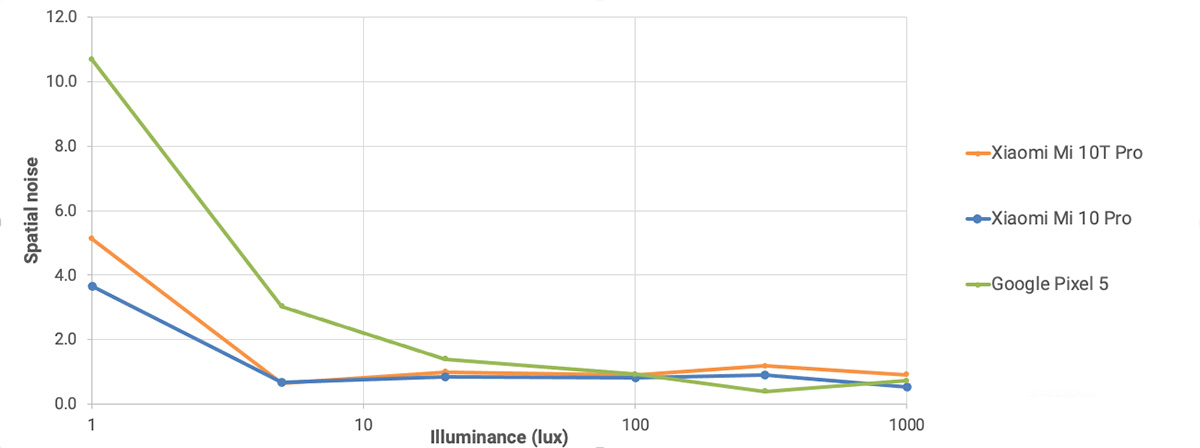


DXOMARK encourages its readers to share comments on the articles. To read or post comments, Disqus cookies are required. Change your Cookies Preferences and read more about our Comment Policy.